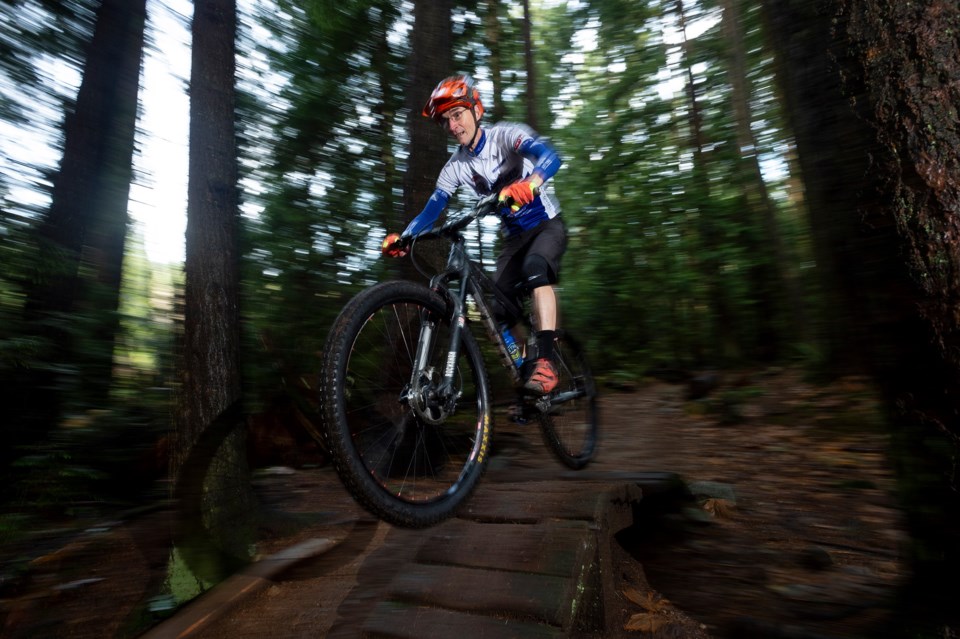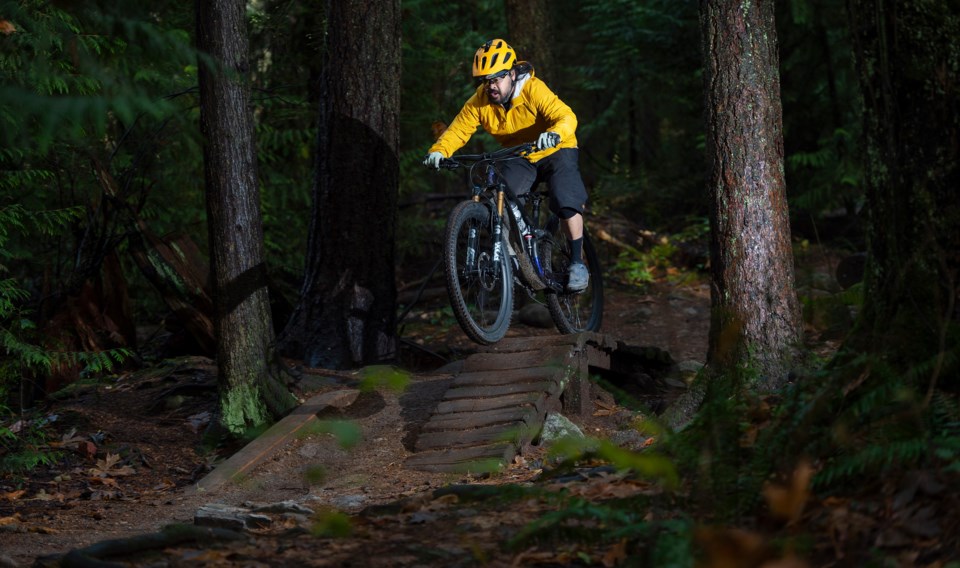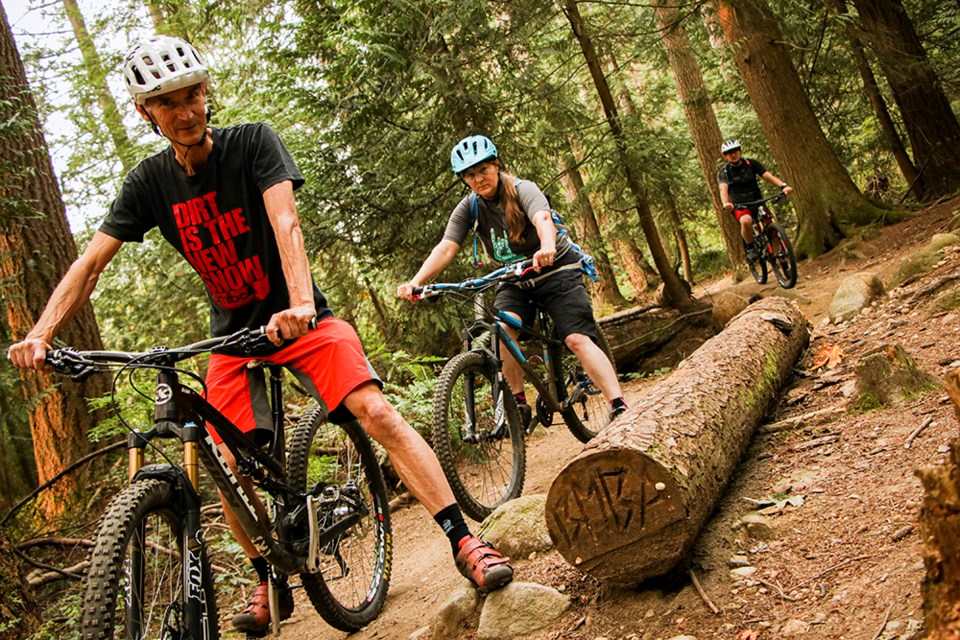But the now-reversed closures may ultimately be what catalyzes significant change in favour of their community. On top of highlighting the fraying relationship between mountain bikers and the city, the incident has left the city exposed to criticism from the mountain biking community.
And as the city seeks to do damage control, it has promised to give the Burnaby Mountain Biking Association what riders have long wanted: more days to work on maintaining trails.
Staff have noted, however, the multi-faceted interests on the mountain tug it in various directions, and the city is now looking to revisit its 1999 management plan for the conservation area. And that will open up fundamental questions for the city about who or what the mountain is for and what the right balance is between conservation and human uses of the space.
In this four-part series, Jammed Gears, reported with interviews and freedom-of-information requests over the last seven months, the NOW explores the history of Burnaby Mountain and the competing interests that shape the mountain today.
To find the full index of stories in this series, see our Jammed Gears landing page.
It’s September, and smoke from U.S. wildfires blankets the Lower Mainland. The region is shrouded in a haze that filters the sun’s rays and casts an amber tone on Burnaby Mountain.
Brian Berg apologizes several times in case he’s talking too much, as he and his fellow riders talk about their work on the mountain and how they feel it has been stymied by the city.
He’s riding along one of Burnaby Mountain’s easier trails, parallel to North Road, along with Judy Garren and Brent Wilson. They’re taking their time, pointing out the various features on the trail and restoration work done by volunteers.
Wilson points out a flattened area framed with a wooden brace to guard against erosion from trail users and water flow. Farther up the trail, they come across an A-frame – a bridge-like feature made of wood and shaped like a capital ‘A’ – and somewhere in the middle of the trail, a fallen tree lies next to the trail, containing the track.
Carved into one end of the log are the letters “Burnaby Mountain Biking Association.” The letters are a clue – the log isn’t there by accident.
The features have been hand-crafted not by professionals but by enthusiasts – the Burnaby Mountain Biking Association, a loose organization led by Garren, its volunteer president, and supported by a group of fellow volunteers that, each year, spends a handful of days repairing and improving the trails.
The group derives its expertise from years of trial and error and shared knowledge with other mountain biking associations.
In place for about a decade, now, the brace guarding against erosion is one of the first features Wilson worked on with the Burnaby Mountain Biking Association.
Burnaby Mountain is far from the only mountain they ride, but it’s their home. And their home is the subject of long-standing tension between riders and the official steward of the mountain: the City of Burnaby.
That tension came to a head last year, after signs were put up on the mountain announcing most of the downhill trails were being decommissioned – a move city officials said was done in error and which was quickly retracted.
The move raised the ire of the national mountain biking community, and for local mountain bikers, even the mistake was cause for concern. Several mountain bikers tell the NOW they’ve felt hostility toward the sport from officials in the city’s parks department for years, and they’re less than trusting of city hall.
But that could change, with city officials engaging in talks with Burnaby Mountain Biking Association members in an effort to mend their relationship.
Passion for the sport
 Brian Berg rides an A-frame on Burnaby Mountain's trails. Photo: Jennifer Gauthier/Burnaby NowNovember 21, 2020.Brian Berg, a mountain biker and volunteer with the Burnaby Mountain Biking Association. Photo: Jennifer Gauthier. By Jennifer Gauthier/Burnaby Now
Brian Berg rides an A-frame on Burnaby Mountain's trails. Photo: Jennifer Gauthier/Burnaby NowNovember 21, 2020.Brian Berg, a mountain biker and volunteer with the Burnaby Mountain Biking Association. Photo: Jennifer Gauthier. By Jennifer Gauthier/Burnaby NowBerg calls himself a “reluctant athlete,” but don’t let that fool you – the 61-year-old looks like he can keep up with just about any of his peers. As he talks about the local hill, his passion for mountain biking can’t be contained in his voice – it seeps out and fills the air around him.
Berg’s bicycle was “everything” to him as a kid, but that changed at around 16 years old.
“The bicycle collects a lot of dust, and you covet that first car, and away you go from there,” he says, and for decades to come his passion was in motorsports.
But he began switching gears at around age 40, picking up a mountain bike purely as a form of exercise at first. It was the community around mountain biking that really drew him in.
“People were welcoming,” he says. “There’s something about it. My current riding group, I’m a retired guy, and I ride with an engineer, I ride with an oncologist, I ride with a journalist. Those are all (a) fairly wide range of professions, but we’re all pulled together with great passion for the bicycle.”
When he first started, Berg encountered another mountain biker about 10 years his senior who was riding up and down the mountain faster than any of Berg’s friends. And just recently, as he was walking his dog, Berg says he found the same man still riding on the mountain.
“He’s well into his 70s, now. He’s slowed down a bit, but the passion never left him,” Berg says.
All sports have communities of ardent supporters, creating a feedback loop that can echo and amplify the community members’ passion for the sport. So what is it that the mountain biking community formed around?
For Berg and mountain biking, it’s another sense of connection.
“When you’re in the forest, and you’re on a nice, narrow piece of single track, there’s just a feeling that you’re in the forest – you’re in nature – and you have a real appreciation for everything around you. You don’t get (that) in other forms of cycling,” Berg says.
“There’s just something magical about it. I think it’s a single-track trail that has this sort of soothing, satisfying feeling that it gives all trail users, from the walkers to the trail runners to the mountain bikers.”
A hill to die on
 Karno Splinter, a mountain biker and volunteer with the Burnaby Mountain Biking Association. Photo: Jennifer Gauthier/Burnaby Now
Karno Splinter, a mountain biker and volunteer with the Burnaby Mountain Biking Association. Photo: Jennifer Gauthier/Burnaby NowThe roughly 1,200-foot-tall Burnaby Mountain is no “Mecca of mountain biking” – Berg pins that distinction across the Burrard Inlet.
The North Shore is famous for its mountain biking trails, which have “inspired trail builders and bikers around the world to replicate ‘The Shore’ style of riding,” according to Mountain Biking BC.
So what’s the big deal if Burnaby Mountain is no longer an option?
Simply put, it’s nostalgia and the future of the sport. As one rider put it, the mountain “truly shaped” them as a person, “from the friendships I have to my passion for mountain biking and my career choices.”
After the workers put up the now-removed signs announcing the closure of the mountain’s downhill trails, the city was bombarded with emails from dozens of mountain bikers.
In the emails, obtained by the NOW through a freedom-of-information request, a nostalgia for the riders’ formative years in the sport shines through.
In all, the NOW’s request turned up nearly 60 emails sent to city officials within a span of a few days – though parks director Dave Ellenwood suggested it could have been in the hundreds. Each message contains not a canned, copy-pasted email that marks an organized letter-writing campaign, but a personal, impassioned plea for the trail closures to be reversed.
And with that nostalgia comes the true selling point: the mountain’s appeal to new riders, a way for the sport to grow its ranks and to be a meeting point for local riders.
“Burnaby Mountain is not the most advanced or most exciting trail network in the Lower Mainland, but I strongly believe that it is one of the most important trail networks for the mountain bike community. The range of lower-difficulty trails and the close proximity to the city has been a great starting point for new mountain bikers and has helped the mountain bike community grow,” a rider wrote.
Another rider notes the sport has attracted bike shops and suppliers to set up shop by the mountain. Others point to the impact of bringing riders from around the region into Burnaby to ride the mountain and spend money at local businesses.
Berg has travelled all over with his mountain bike, but he always comes back to Burnaby Mountain. It’s the “go-to place” he can ride to from his home.
“Especially if time’s limited or whatever, it’s just very handy to be there,” Berg says. “I constantly ride there.”
In part 2 of this series, we will look at the history of Burnaby Mountain and the slow encroachment of modern developments on the otherwise natural space.
To find the full index of stories in this series, see our Jammed Gears landing page.
Find Dustin Godfrey on Twitter at @dustinrgodfrey



